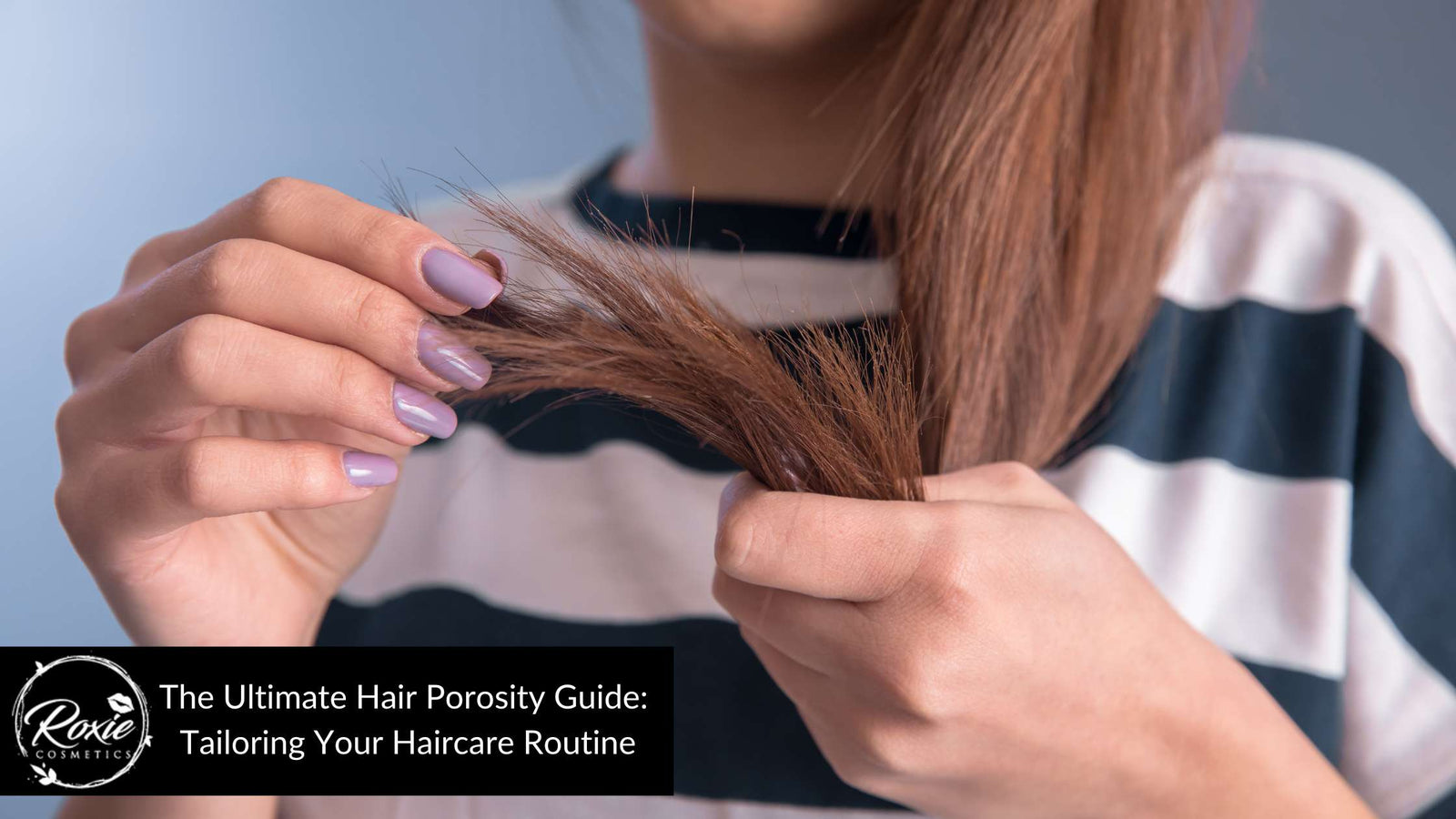Are you tired of trying countless hair products and still not getting the desired results? It could be because you're not taking your hair porosity into consideration. Hair porosity is the ability of your hair to absorb and retain moisture, and it varies from person to person. Identifying your hair porosity can help you tailor your hair care routine to your unique needs, resulting in healthier and more manageable hair. In this ultimate hair porosity guide, we'll take you through the different hair porosity types, how to determine your hair porosity, and how to adjust your hair care routine accordingly. Whether you have low porosity hair that resists moisture, high porosity hair that loses moisture quickly, or normal porosity hair, this guide will help you achieve the luscious locks you've always wanted. Get ready to say goodbye to bad hair days and hello to a personalized hair care routine that works for you.
Understanding Hair Porosity
Hair porosity refers to the ability of your hair to absorb and retain moisture. It is determined by the structure of the hair cuticle, which is the outermost layer of the hair shaft. The hair cuticle is made up of overlapping scales that can open and close depending on the moisture content of the hair. When the cuticle is open, the hair can absorb moisture, and when it's closed, the hair retains moisture. Hair porosity is categorized into three types: low, high, and normal.
How to Determine Your Hair Porosity
Determining your hair porosity is essential to creating a personalized hair care routine. There are several methods to determine your hair porosity. One way is the water test, which involves taking a strand of clean hair and placing it in a glass of water. If the hair floats, you have low porosity hair, if it sinks, you have high porosity hair, and if it stays in the middle, you have normal porosity hair. Another way is the strand test, which involves running your fingers up a strand of hair from the ends to the roots. If it feels rough, you have low porosity hair, if it feels smooth, you have high porosity hair, and if it feels slightly bumpy, you have normal porosity hair.
Low Porosity Hair: Characteristics and Care Tips
Low porosity hair is characterized by its ability to resist moisture. The cuticles of low porosity hair are tightly packed, making it difficult for moisture to penetrate the hair shaft. This type of hair often takes longer to dry and can be prone to product buildup. To care for low porosity hair, it's essential to use lightweight products that won't weigh the hair down. Clarifying shampoos and deep conditioners are also beneficial to remove product buildup and add moisture to the hair. Low porosity hair can benefit from using a steamer or a hair dryer with a hood attachment to help open up the cuticles and allow for better moisture absorption.
High Porosity Hair: Characteristics and Care Tips
High porosity hair is characterized by its ability to lose moisture quickly. The cuticles of high porosity hair are spaced far apart, making it easy for moisture to penetrate the hair shaft but also easy for it to escape. This type of hair is often dry, frizzy, and prone to breakage. To care for high porosity hair, it's essential to use products that lock in moisture, such as leave-in conditioners, hair oils, and hair masks. Using a wide-tooth comb or a detangling brush can also help prevent breakage.
Normal Porosity Hair: Characteristics and Care Tips
Normal porosity hair is characterized by its ability to absorb and retain moisture. The cuticles of normal porosity hair are spaced evenly, allowing for the perfect balance of moisture retention and absorption. This type of hair is the easiest to care for, as it doesn't require any special products or techniques. However, it's still essential to use a balanced hair care routine with products that provide moisture and nourishment to the hair.
Products for Low Porosity Hair
Choosing the right products for low porosity hair is essential to prevent product buildup and increase moisture absorption. Look for lightweight products that won't weigh the hair down, such as leave-in conditioners, serums, and curl enhancers. It's also essential to use clarifying shampoos and deep conditioners regularly to remove product buildup and increase moisture absorption. Avoid heavy oils and butters, as they can sit on the hair and create buildup.
Roxie Recommends
Products for High Porosity Hair
Choosing the right products for high porosity hair is essential to lock in moisture and prevent breakage. Look for products that contain humectants, such as glycerin and honey, to attract and retain moisture. Leave-in conditioners, hair oils, and hair masks are also beneficial to provide moisture and nourishment to the hair. Avoid using heat tools and harsh chemicals that can further damage the hair.
Roxie Tip:For those with high porosity hair, we highly recommend trying out the OnlyBio brand! Not only is it 100% vegan, but it also smells amazing! Give it a try today and you'll see the amazing results for yourself!
Roxie Recommends
Products for Normal Porosity Hair
Choosing the right products for normal porosity hair is all about maintaining the hair's natural balance. Look for products that contain natural ingredients, such as aloe vera, coconut oil, and shea butter, to provide moisture and nourishment to the hair. It's also essential to use a balanced hair care routine, including shampoo, conditioner, and leave-in products, to maintain healthy and manageable hair.
Roxie Recommends
Creating a Haircare Routine Based on Porosity
Creating a personalized hair care routine based on your hair porosity is essential to achieving healthy and manageable hair. Here are some tips to create a hair care routine based on your hair porosity:
Low Porosity Hair Care Routine:
- Use a clarifying shampoo once a month to remove product buildup.- Use a lightweight leave-in conditioner to provide moisture to the hair.- Use a deep conditioner once a week to help open up the cuticles and increase moisture absorption.- Use a steamer or a hair dryer with a hood attachment to help open up the cuticles and allow for better moisture absorption.- Avoid heavy oils and butters that can create buildup.
High Porosity Hair Care Routine:
- Use a leave-in conditioner to lock in moisture and prevent breakage.- Use a hair oil or hair mask once a week to provide moisture and nourishment to the hair.- Use a wide-tooth comb or a detangling brush to prevent breakage.- Avoid using heat tools and harsh chemicals that can further damage the hair.
Normal Porosity Hair Care Routine:
- Use a balanced shampoo and conditioner to maintain the hair's natural balance.- Use a leave-in conditioner to provide moisture and nourishment to the hair.- Use a hair oil or hair mask once a month to provide extra moisture and nourishment to the hair.- Use a wide-tooth comb or a detangling brush to prevent breakage.
Conclusion
In conclusion, hair porosity is a crucial factor in creating a personalized hair care routine. By understanding your hair porosity and selecting the right products and techniques, you can achieve healthy and manageable hair. Whether you have low porosity hair that resists moisture, high porosity hair that loses moisture quickly, or normal porosity hair, there's a hair care routine that's perfect for you. Say goodbye to bad hair days and hello to luscious locks that reflect your unique hair type.

